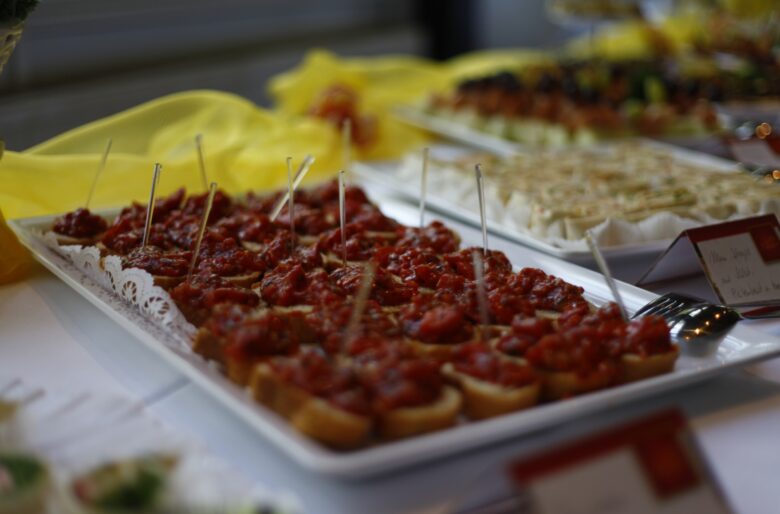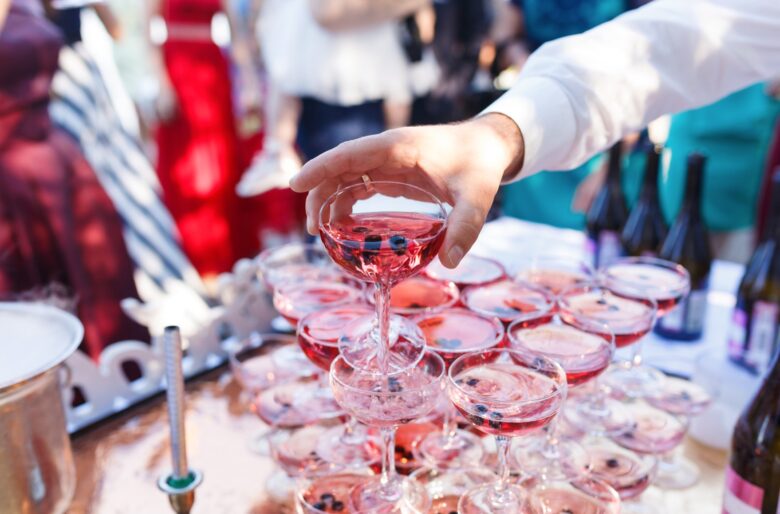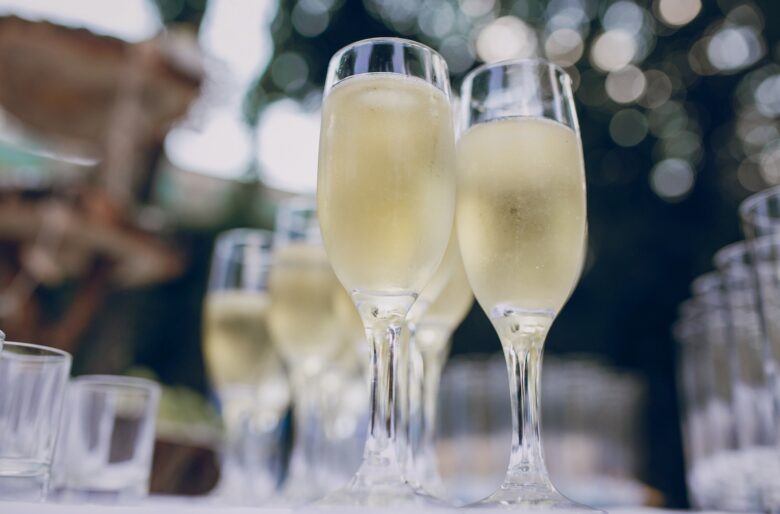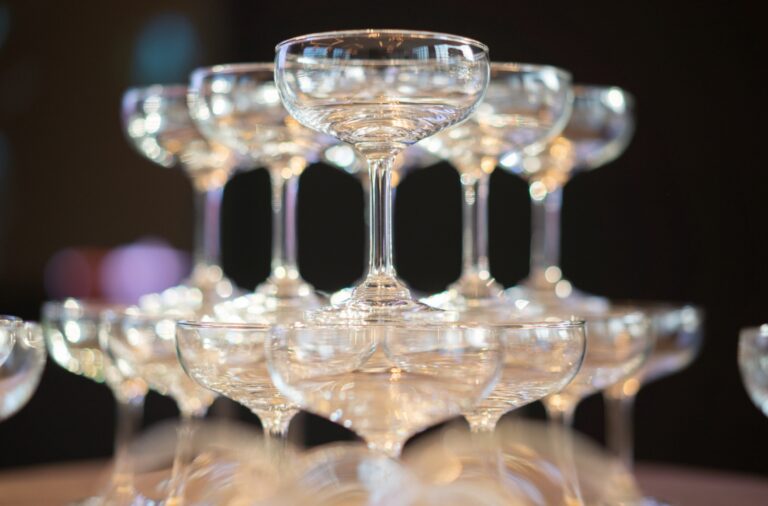Whoever has been, at least once in his/her lifetime, in a starred restaurant (or anyway in a fancy one), knows that, as of today, besides the traditional “tasting menu” – which is now the norm in the majority of them – there is a sort of parallel “side circuit” represented by the wines pairing. Basically, a sommelier chooses for you the perfect wine match for each course, so that the beverages can always enhance perfectly the food’s organoleptic properties.
Some restaurants propose a more extravagant version of the same service; like, for example, René Redzepi’s Noma in Copenhagen (one of the best restaurants in the world, according to the majority of specialized magazines), which proposes a pairing made of juices, brews and broths, but the essence of the service remains the same: there is a pundit who suggests you which is the most appropriate beverage for each specific food.
Curiously, an utterly celebrated drink like Champagne is typically excluded from the most consolidated pairing strategies, even the more alternative ones. It probably depends on the fact that Champagne is commonly considered a drink fit for toasting and celebrating, not something with which you can accompany a meal. Which is correct in a sort of “orthodox” way to look at it, whereas there is a multitude of dishes that could be perfectly combined with a glass of Champagne.

In fact, when it comes with a wedding banquet, there is a sort of “wild card” for Champagne, even if, according to popular belief, it needs in any case to be complemented with other types of wine.
To be more aware about the different possibilities provided by a bottle of Champagne, if we don’t have the chance to exchange a few words with an experienced sommelier, we can consult Millesima.co.uk’s rich and detailed catalogue. In fact, what is apparently a mere list of Champagne brands from an online seller, turns to be an interesting guide to the discovery of the most hidden secrets of the world’s finest wine production. Including the best pairings that we can find for each single product.
Despite the most rooted convictions, serving glasses of Champagne at a wedding banquet can do no more than making the event even more luxurious and enjoyable. The only thing to pay attention at, as we said before, is finding the right matches. Far from claiming to be exhaustive or remarkably authoritative in this field, we propose you a series of pairings Champagne-food that everyone can recognize as particularly apt. You can take the following suggestions as a way to begin to appreciate Champagne out of its “safety area”, discovering its versatility and an unexpected multiplicity of combinations.
You will be stunned by the endless possibilities that a glass of Champagne can offer within a single meal. For reasons of convenience, we have divided the types of Champagne in three macro-families based on their dosage, which is the amount of sugar present inside it.

Bruts, secs and doux: how to match food with the right Champagne
According to the international dosage scale, the most unsweetened categories of Champagnes are Brut Zéro or pas dosés (no sugar at all), Brut Nature (less than 3 grams of sugar for each liter), Extra Brut (up to 6g) and Brut (up to 12g). A Brut Zero can be paired with fish crudités and oysters (a classic entrée for a wedding banquet), as well as the Brut Nature. This latter can be also matched with something particularly oily, like fried fish or extra-fat fish such as those living in freshwater (trout, pike, catfish, char, eel, tench, carp, perch, whitefish).
An Extra Brut can generally get along with fresh cheese with a quite gentle taste, like many Italian ones – mozzarella, ricotta, robiola or stracchino –; while a Brut is the perfect pairing with the majority of the most renowned cold cuts and cured meats, with a predilection for those ones that have a strong, tangy aftertaste (Italian prosciutto, Spanish chorizo or Pata Negra, French saucisson, or even the classic American meat jerky). To sum up, we can say that the most unsweetened Champagnes are fit for the beginning of a wedding banquet, right before the guests sit at their tables.
Among the intermediate category of secs, there are essentially two types of Champagne: the Extra Dry (up to 17g of sugar every liter) and the Sec (up to 32g). The Extra Dry is probably the most consumed and appreciated Champagne all over the world, essentially for its versatility. For many sommeliers, if you choose an Extra Dry you can consume a whole meal without feeling the need of a change; it’s not by chance, then, if many wedding banquets the only Champagne featuring in the menu is an Extra Dry.

Clearly, even this typology of Champagne has its favorite foods, which means those ones that are able to enhance its incomparable bouquet of scents and flavors: among them, we can mention all the crustaceans (lobster, crawfish, scampi, crab, shrimp and prawn), many shellfish (mussel, clam, scallop), white meat (turkey, chicken), small game (quail, pigeon, pheasant) and mushrooms. For what concerns the Sec category, the question is a little bit more complicated, since its range of sweetness is much wider than the previous ones; this means that a Sec can be either an Extra Dry with just a little pinch of extra sweetness, or something that gets dangerously close to the doux category.
Speaking in general terms, a Sec is the traditional pairing for one of the staples of French cuisine: foie gras. Beside it, it’s often paired with all kinds of blue cheese, as well as dry pastry products, such as butter biscuits, ladyfingers or macarons. It is still a subject of debate if fresh fruits should be paired with an Extra Dry, a Sec or a Demi-Sec (the latter was the favorite one until a few decades ago, but as of today there is a sort of “revisionism” ongoing): in many cases the final decision is left to the client. While with nuts or similar (almonds, Macadamia) there are no doubts: a Sec is undoubtedly preferable.
The sweetest types of Champagne are the Demi-Sec (up to 50 grams of sugar per liter) and the Doux (more than 50g). A Demi-Sec is typically served with every kind of creamy pastry or dessert: cakes, beignets, spoon desserts, ice creams; even a simple slush can be “enhanced” with some Champagne drops, to give it a hint of alcohol and a slight bubbly feeling under the palate. This is the reason why we typically find a Demi-Sec only at the end of a wedding, as a “toasting drink” to accompany the wedding cake. More controversial is the debate around the Doux, which is also the rarest type of Champagne currently available on the market.

There is not a “correct” pairing for it, since it prevalently goes with personal taste: if you like a massive, almost hegemonic predominance of sweetness in your mouth, you just have to go with it. Some sommeliers suggest that we should try it with the spiciest foods, maybe because the sugar has an anesthetic effect on the tastebuds: and this is, at the moment, the more orthodox pairing for a Doux. Not to mention that a good Champagne is a delicacy by itself, Doux or Brut it might be.

